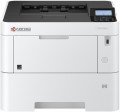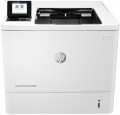Mono print
The black and white print speed provided by the printer. It should be noted that this parameter is often indicated for low quality when the device is running at maximum performance; at a higher quality (even at standard), the actual speed can be noticeably lower, so you should choose with a certain margin. Also note that high speed significantly affects the price, power consumption and noise level. Therefore, it does not always make sense to chase maximum performance — for simple applications (for example, at home or in a small office), a relatively slow and inexpensive device may be the best choice.
As for specific values, speeds
up to 20 ppm are considered relatively low,
20 – 30 ppm — average,
31 – 40 ppm — decent, and the fastest models are capable of delivering
more than 40 pages per minute.
Duplex printing
Automatic duplex printing function .
In this mode, the user does not need to manually turn over each sheet and send it to print on the second side — this will be done by the printer mechanism, and materials printed on both sides will immediately enter the output tray. This not only saves time, but also eliminates confusion: a person can make a mistake and print one of the sides “upside down”, automation does not allow such errors.
Monthly resource
The maximum number of pages the printer can print in a month while still operating at full capacity.
Mono cartridge resource
The maximum number of pages that the printer's ink (toner) can print. The value is rather conditional, in reality the deviations from the norm are very large (up or down). In inkjet printers, the cartridge life is relatively small and amounts to several hundred prints. In laser and LED devices, the bill is already in the thousands.
OPC drum resource
The photoconductor is used in laser and LED printers (see Printing technology); during use, due to constant contact with paper, scratches and abrasions appear on it, which significantly affect print quality. In some printers, the photoconductor is part of the cartridge — in this case, its resource is equal to the resource of the cartridge, the drum is installed and changed along with it. In other models, the drum is installed separately.
The drum yield is the maximum number of pages that a printer with a drum unit can print without any noticeable loss in quality. It is usually specified for printers with a separate drum. The resource is a rather approximate value, because depends on the specific conditions of using the printer, and in fact it may differ from the claimed value both in one direction and in the other.
Cartridge model
The types of cartridges (both black and white and colour) used in the printer. Some printer models are able to work with "non-native" cartridges, but this feature usually refers to undocumented features, and the manufacturer's warranty covers only specific types of cartridges. So use "non-native" models with caution.
Larger capacity cartridge
The printer cartridge is designed for a certain service life (resource). However, the machine's compatibility with different cartridges sometimes allows you to install a higher capacity cartridge, which can result in more pages being printed. It is these models that have
the option to expand the print resource that are included in this paragraph.
Screen
The type of screen provided in the design of the printer. This parameter is indicated by two points — colour (monochrome or
colour display), as well as the absence or
presence of a touch screen(if only colour is indicated, then the screen is not touch).
Chroma determines the features of the image on the display. Monochrome (black and white) screens allow you to display a lot of different information, and are inexpensive. On the other hand, such a display is poorly suited for viewing drawings and photographs sent for printing — for such purposes it is better to use more expensive, but more functional colour screens.
As for touch displays, they provide additional convenience in management and expand its capabilities. Various controls can be displayed on such a screen — sliders, lists, text menus, etc.; operating them with touches on the display is easier than using traditional control panels with hardware buttons. On the other hand, the presence of a sensor affects the cost of the display, and it makes sense to use this feature mainly in advanced printers with an abundance of additional functions.
Screen size
The diagonal of the display installed in the printer.
The larger the display, the more convenient it is to use, the better you can see the image on it. Large-screen printers are especially useful when you need to view a variety of graphics on the screen. In addition, a large diagonal is highly desirable for touch screens (see "Display"). On the other hand, the larger the display, the more expensive it is and the more space it takes up, despite the fact that a small diagonal is enough for basic tasks and settings.

